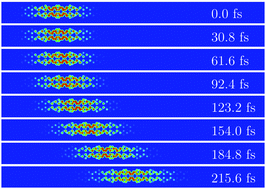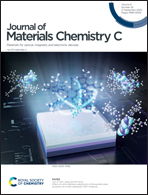Transport of quasiparticles in coronene-based graphene nanoribbons
Abstract
Inspired by accomplishments of graphene in nanoelectronics, several carbon allotropes were proposed recently. Computational and experimental studies have been performed to describe their fundamental features toward improvement in applications regarding energy conversion and storage. However, investigations about crucial aspects behind the material's performance, such as the formation and dynamics of charge carriers, are missing for several of those allotropes so far. Here, we numerically investigate the stability and transport properties of polarons and bipolarons in coronene-based graphene nanoribbons (CNRs), which were recently synthesized. A 2D tight-binding Hamiltonian endowed with lattice relaxation effects is developed to describe the formation of these quasiparticle species. A semi-classical transport approach is used to study the stationary and dynamical properties of charge carriers in the presence of an external electric field. Remarkably, the results reveal that polaron and bipolaron formation takes place in both armchair and zigzag CNRs but, only in the former, these quasiparticles are mobile. The mobility of polarons is considerably higher than that of bipolarons, once the latter have larger effective mass. In contrast, bipolarons are more stable and support electrical field strengths of higher intensity than polarons.



 Please wait while we load your content...
Please wait while we load your content...